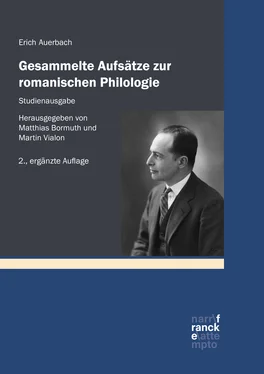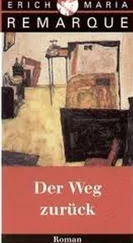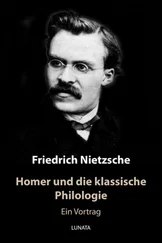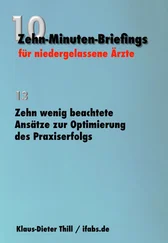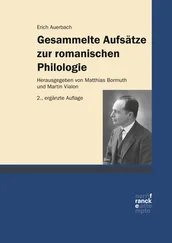It has been asked many times whether the alta vittoria for which Rahab stands as a sign is that of Joshua or that of Christ, and the commentators have decided for one or the other possibility. But she stands for both: for the victory of Joshua inasmuch as Joshua figures Christ, for that of Christ inasmuch as Christ ‘fulfills’ Joshua; figuram implere is the term used by the Fathers of the ChurchKirchenväter. Of course, it is the figurative sense which gives to the literal sense its importance and only by the former can the prominent position of Rahab be explained. But both terms of a figurative relation are equally true, equally real, equally present: the figurative sense does not destroy the literal, and the literal does not deprive the figurative of its quality of a real historical event. I have tried to explain this in my above quoted article ‘figura’.
Obviously, the last sentence too, che poco tocca al papa la memoria , is to be understood in a twofold and figurative manner. It is not only the Holy Land in its concrete terrestrial sense, terrena Jerusalem, which the Pope has forgotten by fighting against Christians instead of liberating it; he also, for the sake of the maledetto flore , has lost all memory of our city to come, aeterna Jerusalem.
In the 13th Canto of the Paradiso Thomas AquinasThomas v. Aquin speaks of the two persons who were created immediately by the Trinity, and in whom therefore human nature reached its highest perfection:
Però se ’l caldo amor la chiara vista
de la prima virtù dispone e segna
tutta la perfezion quivi s’acquista
Cosi fu fatta già la terra degna
di tutta l’animal perfezione;
cosi fu fatta la Vergine pregna:
Si ch’io commendo la tua opinione
che l’umana natura mai non fue
ne fia qual fu in quelle due persone. (vv. 79–87)
These two persons are Adam and Christ; this is evident, and has been almost universally acknowledged.29 We have to deal here with Christ the man, l’uom che nacque e visse senza pecca ( Inf. 34, 115). It may be interesting to note that DanteDante not only followed the general tradition in his treatment of the theme Adam-Christ, but that he even had models for the special development of the figure terra-Maria. On this matter, there is the following statement in the Allegoriae in Vetus Testamentum , cap. VII (Appendix to Opera Hugonis de Sancto VictoreHugo v. St. Victor, Patr. Lat ., CLXXV, 639):
Terra de qua primus homo natus est, significat Virginem, de qua secundus homo natus est: virgo terra, virgo Maria. Sicut de terra divina operatione factus est corpus humanum sic de Virgine divina operatione Verbum creditur incarnatum. Sine macula fuit corpus Adae sumptum de terra (‘di tutta l’animal perfezione’), et immaculatum corpus Christi animatum de Maria. Adam factus est in sexta saeculi die, Christus natus est in sextae aetate, et passus est in sexta hora diei, sexta feria hebdomadae. Adam obdormivit ut de costa eius fieret Eva, Christus sopitus est ut de sanguine eius redimeretur Ecclesia. Adam sponsus et Eva de ipso facta sponsa, Christus sponsus et sponsa ab ipso redempta Ecclesia. Adam debuit praeesse et regere Evam, Christus praeest et regit Ecclesiam. Terra ergo Maria; sexta feria, sexta aetas, vel sexta dies, vel sexta hora. Adam Christus, dormitio Adae, passio Christi; conditio Evae, redemptio Ecclesiae. Ad similitudinem quoque Adae et Evae, Christi et Ecclesiae, est Deus sponsus cuiuslibet fidelis animae.
All these motifs are traditional, though I have not found the figure terra-Maria (‘virgin soil’) anywhere else except in DanteDante and in this passage from the Dubia of Hugo of St VictorHugo v. St. Victor. But it too must belong to the tradition, since the Allegoriae are nothing else than a compendium of traditional typology. More widespread is the figure Eva-Ecclesia, in connexion with the lateral wounds30 and the relation between Adam’s sleep and Christ’s Passion; it was familiar already to TertullianTertullian who writes ( De Anima , 43): Si enim Adam de Christo figuram Jabot, somnus Adae mors erat Christi dormituri in mortem, ut de iniuria lateris eius vera mater viventium figuraretur Ecclesia . As for the figure Eva-Maria, it has been, I think, most beautifully presented by Bernard of ClairvauxBernhard v. Clairvaux; the following passage comes from the once famous Sermo de aquaeductu ( In nativitate B. Mariae Virginis , § 6, Patr. Lat ., CLXXXIII, 441), which we will have to quote again afterwards: Ne dixeris ultra, o Adam: mulier quam dedisti mihi dedit mihi de ligno vetito; dic potius: mulier quam dedisti mihi me cibavit fructu benedicto.
For the verses Par. 27, 136–138:
Cosi si fa la pella bianca nera
nel primo aspetto de la bella figlia
di quel ch’apporta mane e lascia sera,
the interpretation of the daughter of the sun ( di quel ch’apporta mane e lascia sera ) as Circe, given first by Filomusi-GuelfiFilomusi-Guelfi, L., seems to me not an ideal solution, in spite of Michele Barbi’sBarbi, M. approval and in spite of the fact that some earlier passages31 may be alleged to support it. Neither am I inclined to accept the explanation of filia solis as humanity by referring to Par . 22, 116, where the sun is called padre d’ogni mortal vita . Indeed, I too believe that humanity or at least Christianity is meant, but that cannot be established in this way, and if for no other reason than that mortal vita is not humanity alone.
I think that those are on the right track who have referred to the Canticles for an explanation. But they base themselves, as far as I know, only on Cant. 7, 1 in connexion with Psalm 44, 14, where filia principis or regis is mentioned; this was sometimes interpreted, in the Middle AgesMittelalter, as the Church. But it is a rather weak support; for principis or regis is not solis ; and every expert in the figurative tradition will agree with me that the Church (or Christianity or the faithful soul) is very often symbolized as sponsa Christi , but scarcely as his daughter32 – and there is no doubt that the sun, in the typological tradition, can mean nothing else but Christ, sol iustitiae and oriens ex alto . It is very likely that DanteDante was in difficulties for a rhyme, and thus he may have combined the unusual image filia principis with sponsa solis ; or even, the difficulty of the rhyme may have induced him to a somewhat violent and ambiguous order of words: so that di quel ch’ apporta mane e lascia sera would depend not on figlia , but on primo aspetto ; thus, the problem filia solis would disappear, and the sentence, in normal word-order, would run: Cosi si fa la pelle bianca della bella figlia nera, nel primo aspetto di quel … But although I personally am very much inclined to adopt this solution, I have no means of proving it.
Anyway, the motifs bella figlia , pelle bianca , nera, sole contain for the mediaeval reader a reference to another passage of the Canticles, namely 1, 4–5: nigra sum sed formosa, filiae Jerusalem, sicut tabernaculum Cedar, sicut pelles Salomonis; nolite me considerare quod fusca sim, quia decoloravit me sol . The allusion is the more evident (not for us, but for the mediaeval reader), since before in the entire 27th canto the theme of the corruption of the Church (or anger and shame about it) had constantly been connected with change or loss of colour (V. 13–15; 19–21; 28–36; see also Par . 22, 91–93). The interpretation of Cant. 1, 4–5 has produced such rich and varied speculation that the explanation of DanteDante’s verses is not immediately facilitated by this reference; one thing at least is evident, that the filia or sponsa of the Canticles is the Church or Christianity, that therefore we have to deal with its corruption. Moreover, I shall quote some commentaries on the Canticles which may perhaps help to a more accurate understanding of DanteDante’s intention.
Читать дальше
